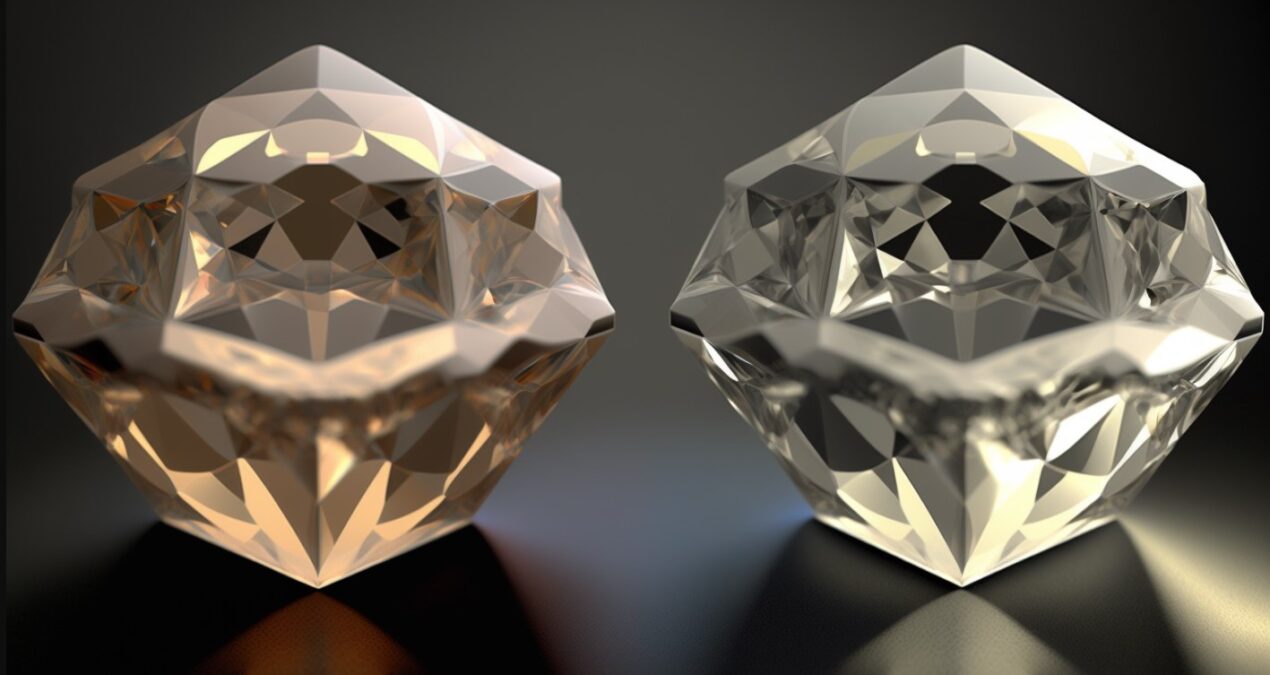When it comes to diamonds, understanding the difference between those that are created in a lab and those that are formed naturally can be a challenging task. In this article, we will discuss the key differences between these two types of diamonds, providing you with a deeper understanding of their characteristics, similarities, and dissimilarities.
Formation Process
One of the most significant differences between lab-grown and natural diamonds is the process through which they are formed. Natural diamonds are created deep within the Earth’s mantle over the course of millions or even billions of years. They form under extreme heat and pressure, which causes carbon atoms to crystallize into the familiar diamond structure. These diamonds are then brought to the surface through volcanic activity.
On the other hand, lab-grown diamonds are created through controlled processes that replicate the conditions under which natural diamonds form. There are two main methods for creating lab-grown diamonds: High Pressure High Temperature (HPHT) and Chemical Vapor Deposition (CVD). Both methods result in the growth of diamond crystals, but the process can be completed in just a few weeks or months, rather than millions of years.
Physical and Chemical Properties
Both lab-grown and natural diamonds share the same crystal structure and chemical composition, consisting of carbon atoms arranged in a tetrahedral lattice. This gives diamonds their well-known properties, such as exceptional hardness, brilliance, and ability to refract light. However, there can be some subtle differences between the two types of diamonds:
- Inclusions: Natural diamonds often contain inclusions or imperfections, which are a result of the long and complex formation process. Lab-grown diamonds can also have inclusions, but they tend to be fewer and less noticeable due to the controlled growth environment.
- Color: Both natural and lab-grown diamonds can exhibit a range of colors, from colorless to shades of yellow, brown, blue, and more. However, lab-grown diamonds can be created with more precise control over the color, allowing for the production of rarer and more desirable hues.
- Grading: Both types of diamonds can be graded using the 4Cs – carat, cut, color, and clarity – to assess their quality. However, lab-grown diamonds may receive slightly different grading reports due to the unique characteristics associated with their formation process.
Ethical and Environmental Considerations
One of the main reasons some people choose lab-grown diamonds over natural ones is the ethical and environmental implications associated with diamond mining. Mining for natural diamonds can lead to habitat destruction, water pollution, and the displacement of local communities. Additionally, conflict diamonds, or “blood diamonds,” have been used to finance wars and human rights abuses in some parts of the world.
Lab-grown diamonds, on the other hand, offer a more sustainable and ethical alternative to mined diamonds. They require significantly less land and water, and produce fewer greenhouse gas emissions and waste products. Plus, since they are created in controlled environments, lab-grown diamonds are not associated with conflict or human rights abuses. As a result, many consumers who prioritize sustainability and ethical sourcing may opt for lab-grown diamonds over their natural counterparts.
Cost Differences
Another significant difference between lab-grown and natural diamonds is the cost. Lab-grown diamonds are generally less expensive than natural diamonds, often by as much as 20-40%. This price difference can be attributed to a variety of factors, including the shorter production time, lower overhead costs, and the absence of mining expenses. For consumers looking for a more budget-friendly option, lab-grown diamonds can be an attractive alternative without sacrificing quality or appearance.
Value and Resale
When it comes to value and resale potential, natural diamonds typically hold their value better than lab-grown diamonds. This is due to the perception of rarity and the longer-lasting appeal associated with natural diamonds. While lab-grown diamonds are becoming more widely accepted and popular, they may not have the same long-term investment value as natural diamonds. However, for those who prioritize ethical and environmental concerns or are looking for a more affordable option, this may not be a significant factor in their decision-making process.

In Conclusion
While lab-grown and natural diamonds share many similarities, there are key differences that set them apart. These differences include their formation process, physical and chemical properties, ethical and environmental considerations, cost, and value. Understanding these distinctions can help you make an informed decision when purchasing a diamond, whether you prefer the rarity and historical allure of natural diamonds or the ethical and budget-friendly appeal of lab-grown diamonds.
And now, for a little diamond-related humor to brighten your day:
Why did the lab-grown diamond feel so confident?
Because it knew it was made under pressure!
Ciao! I am Salvatore, a master jeweler from the mesmerizing island of Sicily. With a wealth of experience spanning over ten years, I take great pride in my exceptional craftsmanship and meticulous attention to detail. My expertise lies in both traditional and contemporary jewelry designs, where I seamlessly blend the rich history and culture of my beloved Sicily into each distinctive piece.




